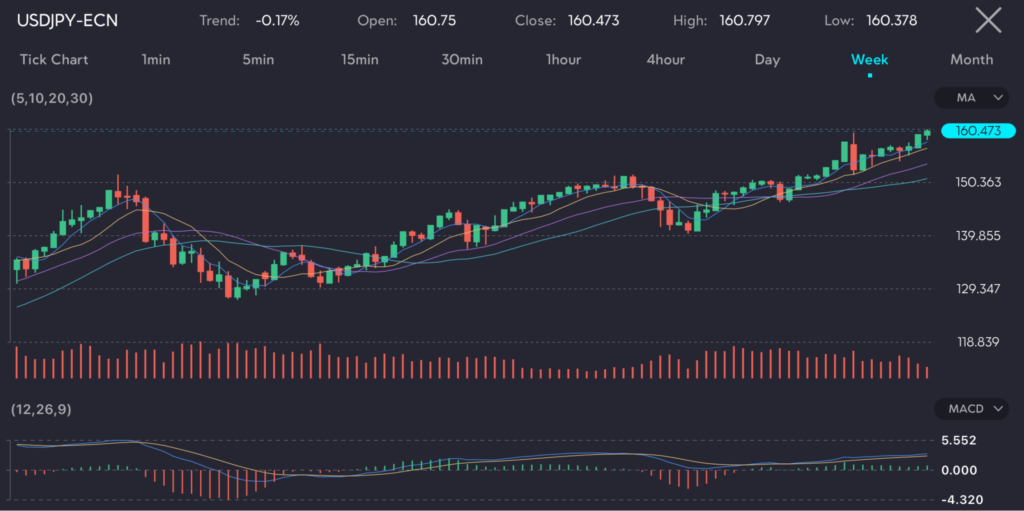Key points:
- The Japanese yen remains near a 38-year low, hovering around 160 per dollar, raising concerns of possible intervention by Japanese authorities.
- US dollar strength continues as markets are in anticipation of its inflation data.
This article is a follow-up to: JPY plummets with silence on rate hike timeline from the BoJ
The Japanese yen remained near a 38-year low against the US dollar, trading just below 160.88, its weakest level since 1986. The decline of the Japanese yen, about 12% for the year, highlights the widening interest rate differentials between Japan and the US.
Picture: JPY losing strength against USD, as observed on the VT Markets app.
This downward pressure has kept markets on high alert for potential intervention from Japanese authorities, especially after the Ministry of Finance spent nearly 9.79 trillion yen in late April and early May to prop up the currency.
Factors contributing to weakness of the Japanese currency
The stark difference in monetary policy between Japan and the US has been a primary driver. While the US Federal Reserve has been on a tightening path, maintaining high interest rates, the Bank of Japan has kept its rates near zero, continuing with its ultra-loose monetary policy.
Related article: Interest rate tug-of-war for central banks
Further, the low-interest-rate environment of the Japanese yen makes it a preferred funding currency for carry trades, where investors borrow in yen to invest in higher-yielding assets elsewhere.
Potential intervention by the Japanese authorities
Decline of the Japanese yen has heightened market nervousness about possible intervention from Tokyo. It is possible that the Japanese authorities might be waiting for the US personal consumption expenditures (PCE) price index release on Friday before deciding on any intervention.
Read more on inflation data expected to influence policy for the week.
What traders should look out for
The near-term trajectory of the Japanese yen will depend on a combination of domestic monetary policy decisions and global economic data, particularly from the US. With the yen at critical levels, any signs of intervention or shifts in US inflation expectations could prompt significant market movements.
Traders should remain vigilant, especially with key economic data releases on the horizon.










